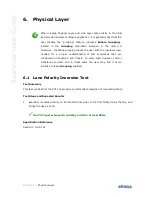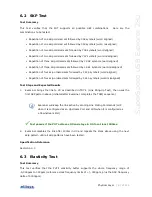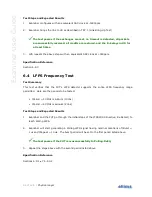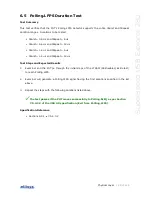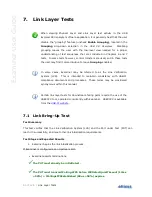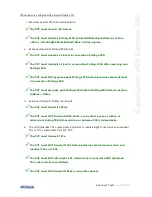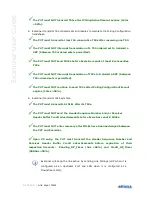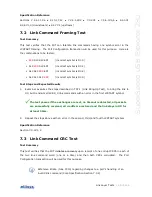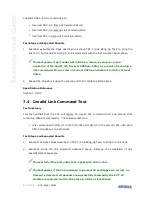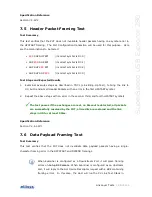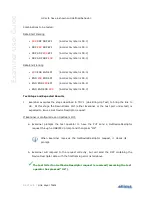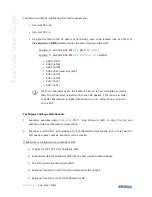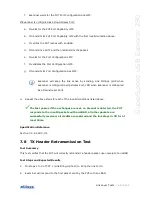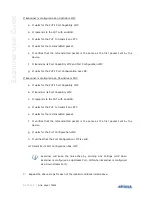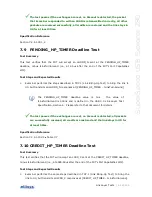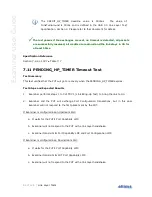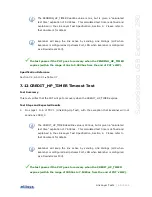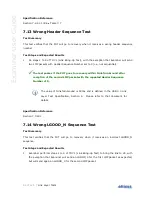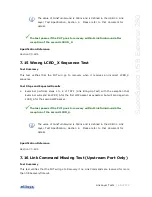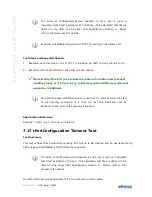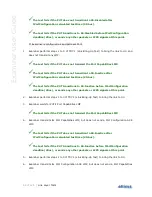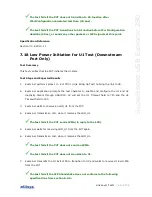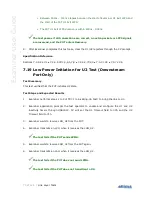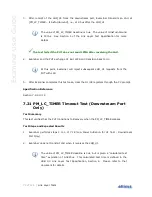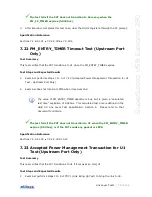
58 of 124 |
Link Layer Tests
Ex
ami
n
er
U
se
r
G
u
ide
The tested conditions invalidating the header packet are:
Incorrect CRC-16
Incorrect CRC-5
A single K symbol in the HP data (see list below), each to be located (one at a time) at
the second and fifth characters after the start framing ordered set.
Position 2: SHP SHP SHP EPF
DX.X
KX.X
DX.X DX.X
Position 5: SHP SHP SHP EPF
DX.X DX.X DX.X DX.X
KX.X5
K28.2 (SDP)
K28.3 (EDB)
K28.4 (SUB)
K28.6 (Reserved K-symbol)
K27.7 (SHP)
K29.7 (END)
K30.7 (SLC)
K23.7 (EPF)
For the K-Character tests, the Packet’s CRC-16 is first calculated correctly,
then, the K-Character is inserted into the LMP packet. This is done in order
to better simulate an in-flight (transmission) error, rather than a chip error
on the PUT.
Test Steps and Expected Results
1.
Examiner executes steps 1 to 3 of TD7.1 (Link Bring-Up Test) to train the link and
exchange Link Advertisements transactions.
2.
Examiner and the PUT will exchange Port Configuration transactions, but in this case the
first header packet sent by Examiner will be invalid.
If Examiner is configured as an Upstream Port:
a.
It waits for the PUT’s Port Capability LMP.
b.
It transmits its Port Capability LMP with the first invalid condition above.
c.
The PUT must respond with an LBAD
d.
Examiner transmits a LRTY and then retransmits the packet.
e.
Examiner transmits the Port Configuration LMP.



